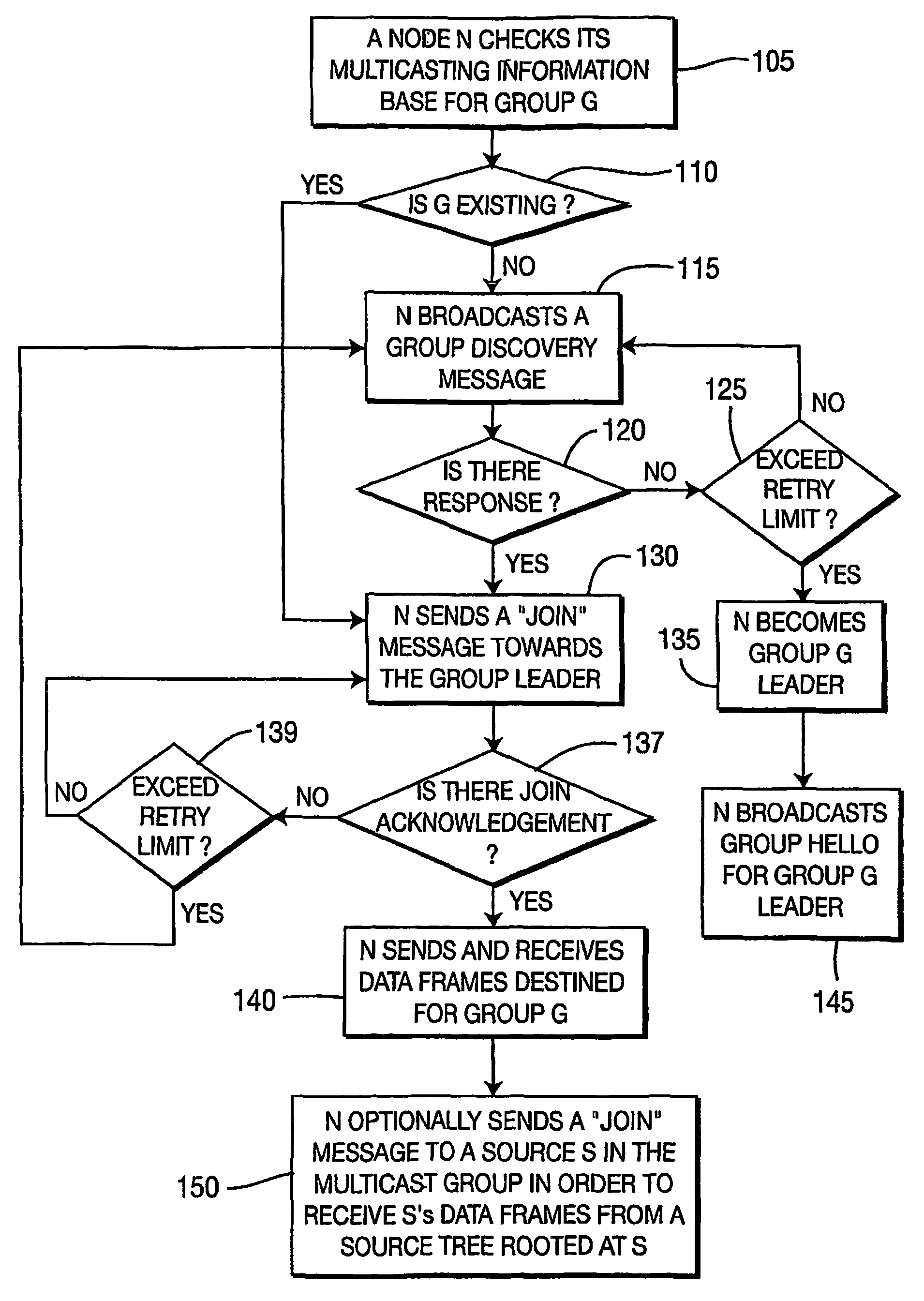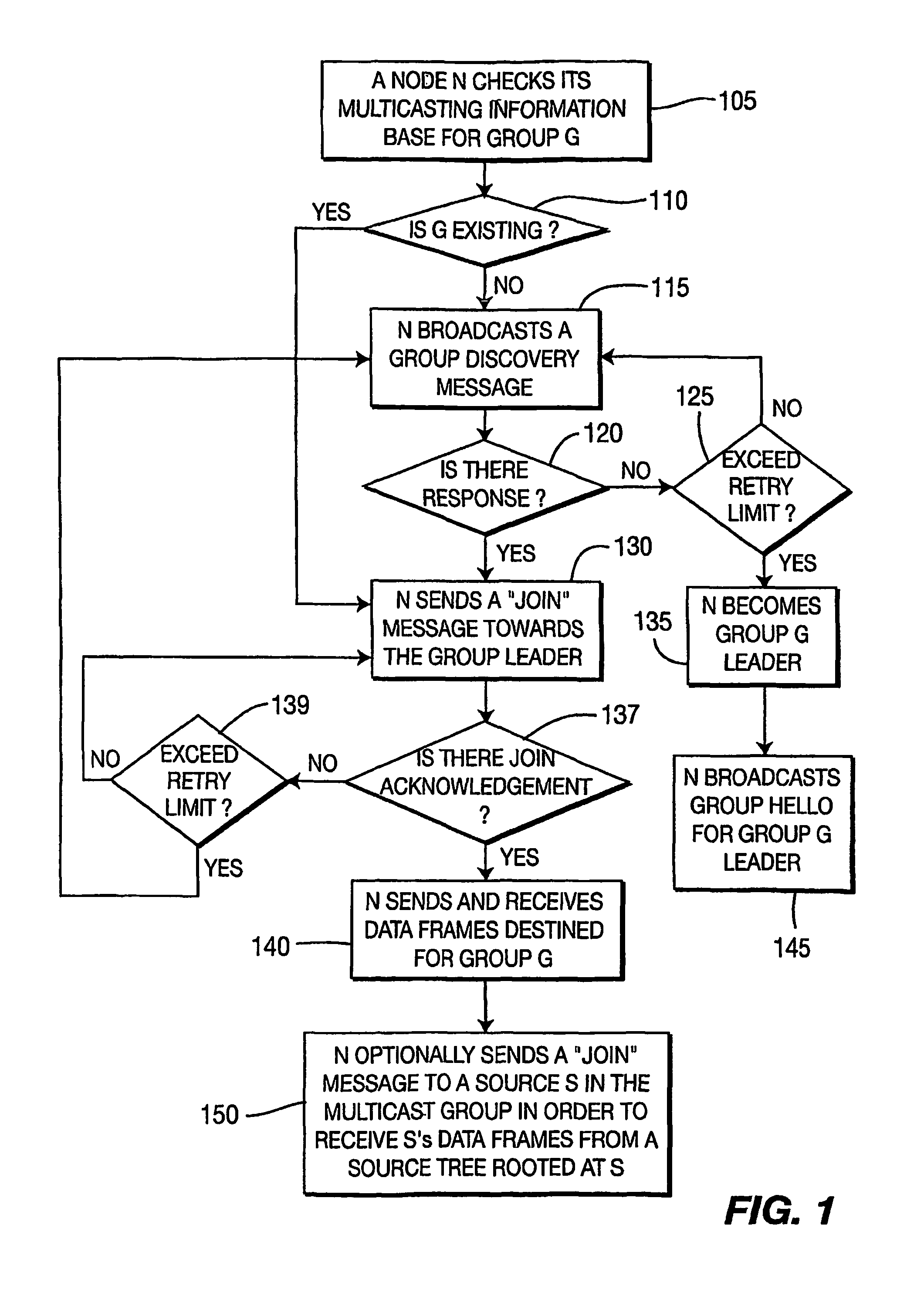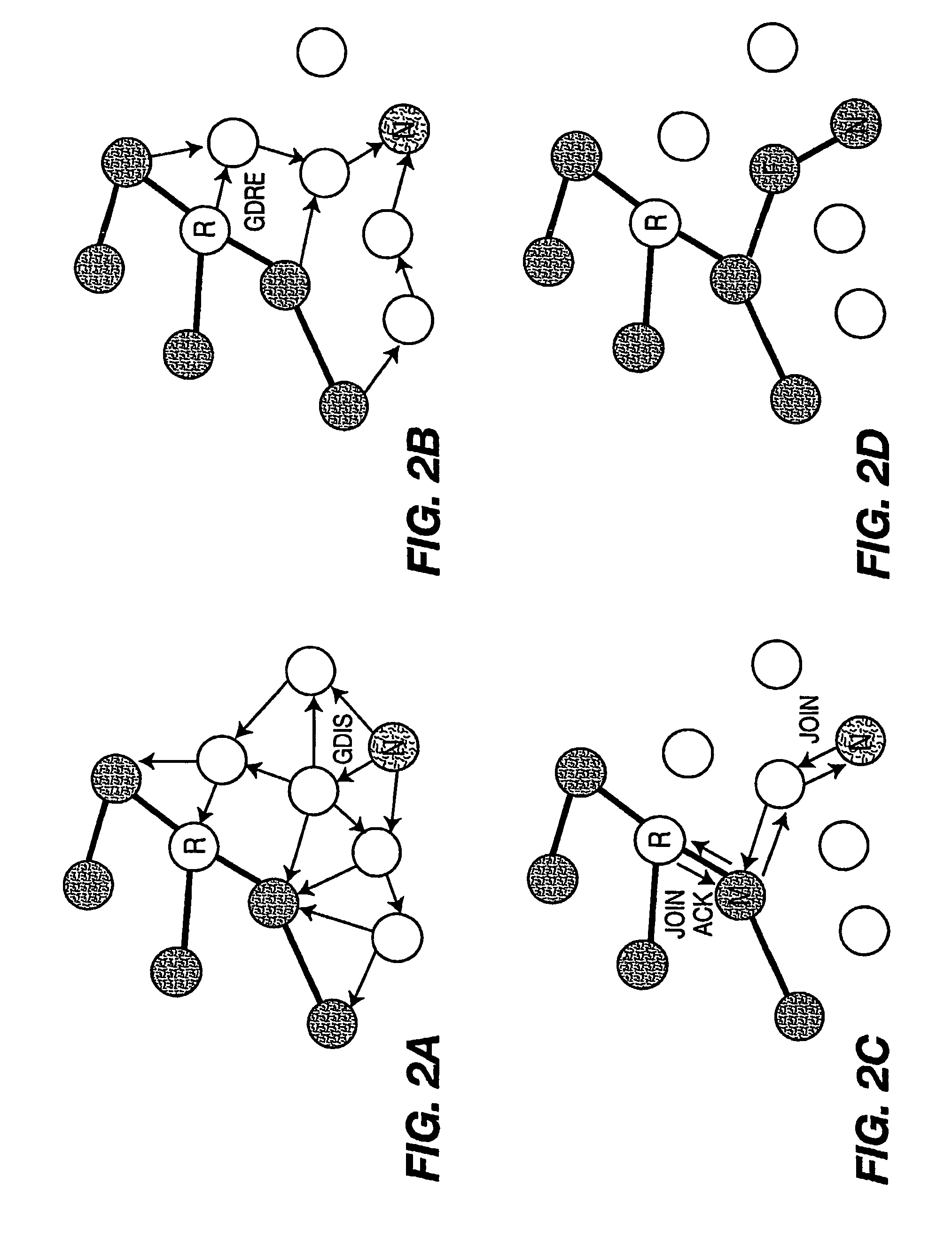Multicast mesh routing protocol
a multi-cast and routing protocol technology, applied in the field of multi-cast routing mechanisms, can solve the problems of large overhead and unsuitable dynamic mesh network manual configuration, and achieve the effect of reducing routing delays
- Summary
- Abstract
- Description
- Claims
- Application Information
AI Technical Summary
Benefits of technology
Problems solved by technology
Method used
Image
Examples
Embodiment Construction
[0021]A node can dynamically join or leave / exit / depart a mesh network. A node can dynamically join or leave / exit / depart a multicast group. Leaving a multicast group does not necessarily mean that the departing node has left the mesh network. However, leaving the mesh network does imply that the departing node has also left the multicast group. Each multicast group has a multicast group leader. The multicast group leader is automatically determined in a distributed manner without requiring any configuration or central control. The first node in the mesh network joining the multicast group becomes the multicast group leader. If multiple nodes in the mesh network join the group at the same time, the node with the lowest IEEE 802.11 MAC address becomes the multicast group leader. A new multicast group leader is created once the current multicast group leader fails so that there is no central point of failure. The multicast group leader periodically floods the Group Hello (GHLO) message ...
PUM
 Login to View More
Login to View More Abstract
Description
Claims
Application Information
 Login to View More
Login to View More - R&D
- Intellectual Property
- Life Sciences
- Materials
- Tech Scout
- Unparalleled Data Quality
- Higher Quality Content
- 60% Fewer Hallucinations
Browse by: Latest US Patents, China's latest patents, Technical Efficacy Thesaurus, Application Domain, Technology Topic, Popular Technical Reports.
© 2025 PatSnap. All rights reserved.Legal|Privacy policy|Modern Slavery Act Transparency Statement|Sitemap|About US| Contact US: help@patsnap.com



